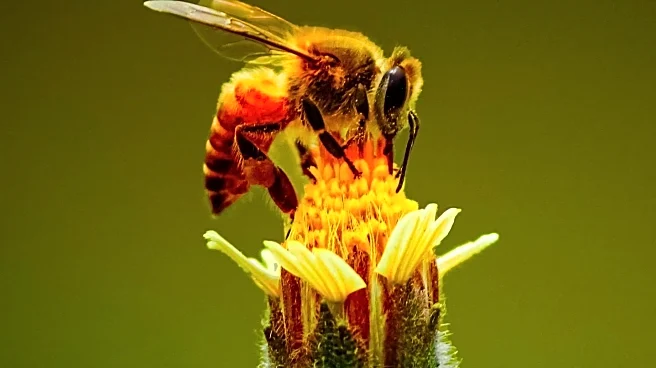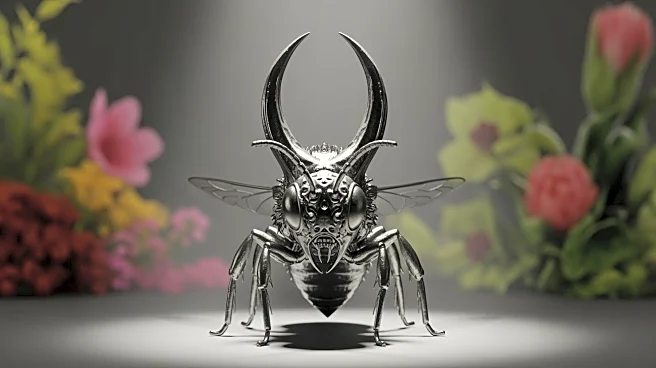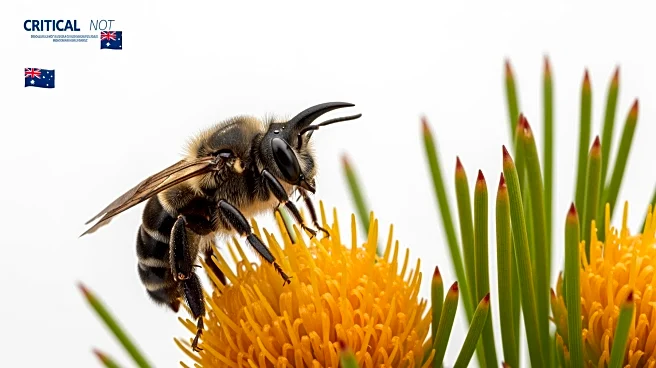What's Happening?
A new bee species, named Megachile (Hackeriapis) lucifer, has been discovered in Australia by Dr. Kit Prendergast from Curtin University. The species is notable for its devil-like horns, which inspired
its name. The discovery was made during a survey of a rare plant in Western Australia's Goldfields region. DNA barcoding confirmed the uniqueness of the species, marking the first new member of this bee group described in over 20 years. The horns may serve functions related to accessing resources or defending nests, although their exact purpose remains unclear.
Why It's Important?
The discovery of Megachile lucifer highlights the rich biodiversity that remains unexplored, particularly in regions threatened by human activities such as mining. Understanding native bee species is crucial for conservation efforts, as they play vital roles in pollination and ecosystem support. The research underscores the importance of protecting habitats from disturbances and climate change, which could threaten both the bees and the plants they depend on. This finding may encourage more comprehensive surveys by mining companies to prevent the loss of undiscovered species.
What's Next?
The publication of this research coincides with Australian Pollinator Week, emphasizing the role of bees and other insects in maintaining ecosystems. The discovery may lead to increased efforts to study and protect native bee species, particularly in areas at risk from industrial activities. Conservationists and researchers may advocate for policies that require environmental assessments before mining operations, ensuring that native species are identified and preserved. The ongoing research could also provide insights into the ecological interactions between bees and their habitats.











